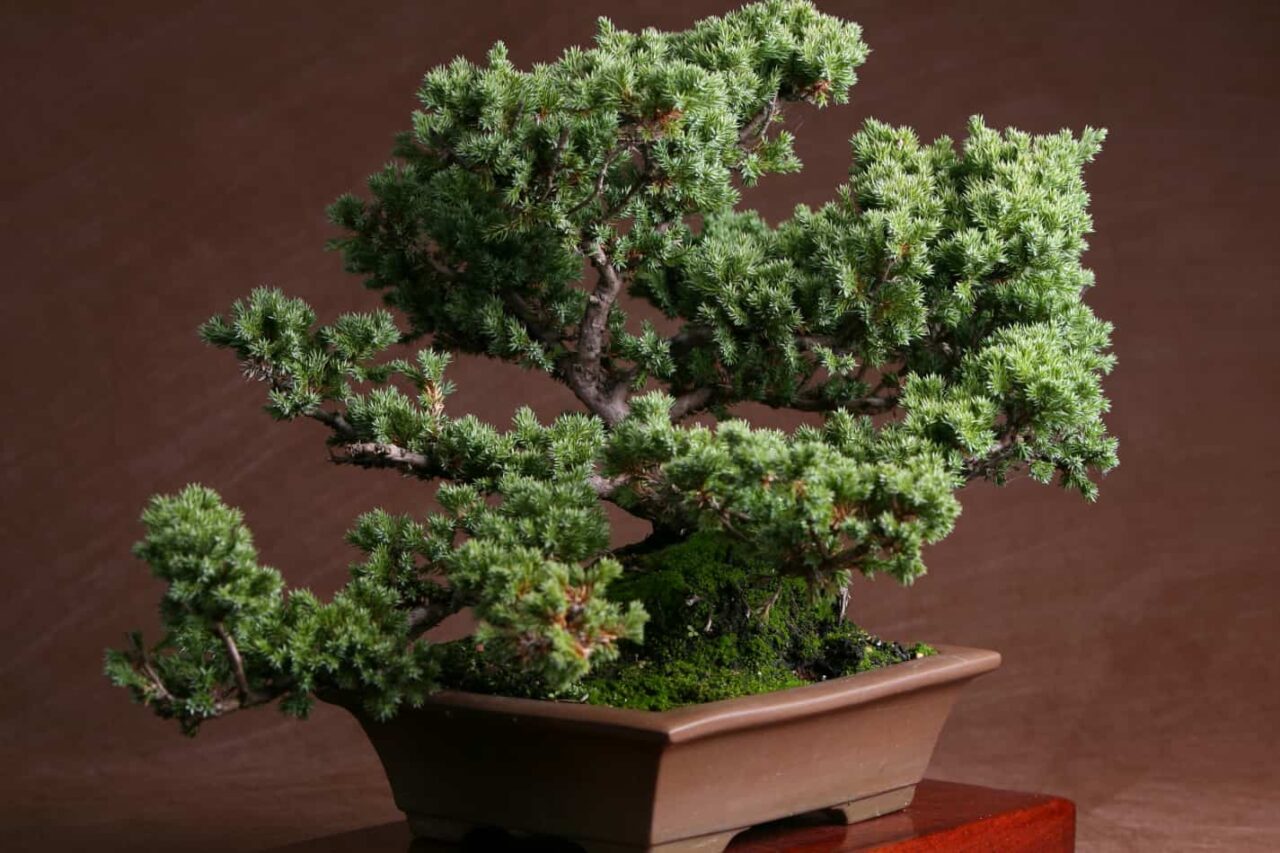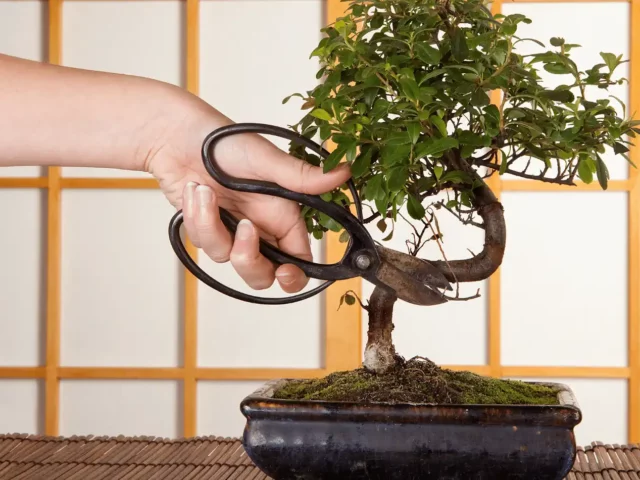If you plan on growing a juniper bonsai, the first question that will pop into your mind is: can juniper bonsai live indoors? Junipers are well-known for their hardiness. And they require very little water or soil. As a matter of fact, juniper trees grow and thrive best in hard, rocky, lifeless environments.
There is no direct answer to the question. A Juniperus bonsai can survive inside your home depending on your indoor setting, how much care you can give it, and the type of bonsai you are keeping. So, the answer can be yes if you can fulfill the criteria.
No matter how little you know about bonsai, if it fascinates you and you love it, you can pursue it. All you need is to take heed of a few basics.

What Is A Juniper Bonsai?
A juniper bonsai is a popular variety of bonsai trees. These bonsais are small, short-stature trees with a prominent, artfully twisted trunk. They have needle-like foliage, which is quite different from average tree leaves.
The Reason For Juniper Bonsai’s Popularity
Most bonsai enthusiasts prefer the Juniper bonsai. Mainly because they are beautiful and easy to care for; moreover, these bonsai can grow in many kinds of temperatures. Although they all require adequate sunlight, the degree to which they need it varies.
Juniper bonsai is so common that anyone with any lifestyle can find a type of bonsai according to their preferences. All these trees require is a little of your daily time and attention.
Species And Family
Junipers have more than fifty species. All of them are members of the cypress family. They are coniferous trees, which means they don’t have flat leaves like average trees.
Instead of normal foliage, junipers have scale-like leaves or needles. The ones with the scale-like leaves grow needle-like leaves first, which later mature into their final form.
Deadwood Styling
Deadwood styling is quite synonymous with Juniper bonsai. These trees have beautiful bark. When you strip off a section of the bark, the wood underneath loses its roughness and color due to sunlight or other weather impacts.
This pale and smooth part is the deadwood. If you can do the deadwood styling the right way, it is possible to create a unique and artistic look for your bonsai without killing or hurting the tree.
Best Juniper Trees For Bonsai
Japanese Garden Jupiter, Chinese Juniper, Sargent’s Juniper, Japanese Shimpaku, and Japanese Needle are some popular Juniper varieties. These trees can all live indoors if you care for them properly.
Of all these varieties, the Japanese Garden Juniper is the best option. This naturally stout and shrubby tree can survive for many years, requiring little maintenance.
This variety is so common that if you go to a bonsai store and pick up an unmarked tree, that one is most probably a Japanese Garden Juniper.
Can Juniper Bonsai Live Indoors?
A Juniperus bonsai is a tree, not a house plant. Therefore, you cannot expect it to do well indoors. However, if you must keep your bonsai indoors, you have to ensure it gets a daily dose of sunlight and just the right amount of humidity.
Provide Sunlight
Your juniper bonsai cannot survive without sunlight. At least four hours of direct sunlight is mandatory for your tree.
So, if you keep it indoors, prepare a spot in your room where the sun falls brightly for a reasonable amount of time each day. Also, try to take your bonsai whenever possible.
The type of bonsai you choose to grow is also necessary here. If you know from the beginning that your tree has to stay indoors, pick up a bonsai that favors such a condition, such as the Japanese garden juniper.
These bonsai need relatively fewer hours of sunlight. Plus, they also do well in dark, shadowy places.
Avoid Excess Watering
Ensure your Juniper’s bonsai’s soil does not hold too much water. These trees are not good at handling excess water. They might suffer from root rot and other problems. Junipers prefer to be thirsty rather than overwatering.
Your bonsai will show signs of distress when it falls victim to excess watering. The branches will become droopy. The trunk will feel soft. The foliage would start to take on a yellowish hue.
So you should be very careful when watering an indoor Juniper bonsai because there is less evaporation of water indoors in comparison to outdoors.
To ensure you are not overwatering your bonsai, allow the soil to dry completely before you water it again. Also, touch the soil to check. It should not feel moist when you touch it.
Another thing to look out for is the pot itself. The bonsai pot should have holes underneath for any excess water to escape.
Maintain Humidity
To overcome the problem of excessive watering and still maintain adequate humidity, you can use two techniques. Use a humidity tree and a spray bottle. With the spray bottle, you can regularly apply mists of water to your tree instead of pouring it down on the soil.
Humidity trays are easy, too. Get a shallow tray. Fill it with water and pebbles. Now, place the bonsai pot on top of the pebbles.
Remember that the water level should not get above the pebbles or touch the bonsai pot. This will create a perfectly humid environment for your indoor bonsai.
Change Your Bonsai Pot
You don’t have to change your Juniper bonsai pot often. Usually, changing the pot once every two years would be enough. However, you should check the roots of your Juniper bonsai at least once a year.
If the roots tangle or form a ball, they are overgrown. This requires trimming and placing the bonsai in fresh soil.
From March to May is the best time to change your bonsai pot. During this period, the Juniper bonsai enters its annual growth phase. So, this is the ideal time to trim the excess roots and change the pot.
Juniper trees can survive in all kinds of soil. So, don’t worry too much about the soil type. Just ensure proper drainage.
Add small rocks, pebbles, and gravel to the soil. You should try to make it rocky. So excess water does not stand in the pot. Meanwhile, a helpful amount of moisture would be retained.
Prevent Diseases
Junipers don’t fall ill easily. But they are still susceptible to pests like aphids and spider mites. If this happens to your bonsai, get an appropriate pesticide from a garden supply store. Apply it to the affected bonsai and the nearby trees in your room.
Some types of Juniper can also get fungal infections and rust. Dead or deformed leaves and strange growths on the trunks are signs of rust or fungal infections. These kinds of infections are highly contagious and usually not curable.
If you find an infected bonsai in your collection, remove it from the other tree as soon as possible. You can try curing it with fungicide, but the best thing is to get rid of it thoroughly to prevent further spread.
Species like Chinese Juniper are known for their resistance to common rust infections. So, they can be an ideal choice if you want to avoid the problem altogether.
Conclusion
Whenever you look at a photo of a juniper bonsai, you must have longed for one. But at the same time, you may have wondered can Juniper bonsai live indoors. The answer is simple.
Your juniper bonsai can survive inside a loving home with regular care, plenty of sunlight, and adequate moisture.






